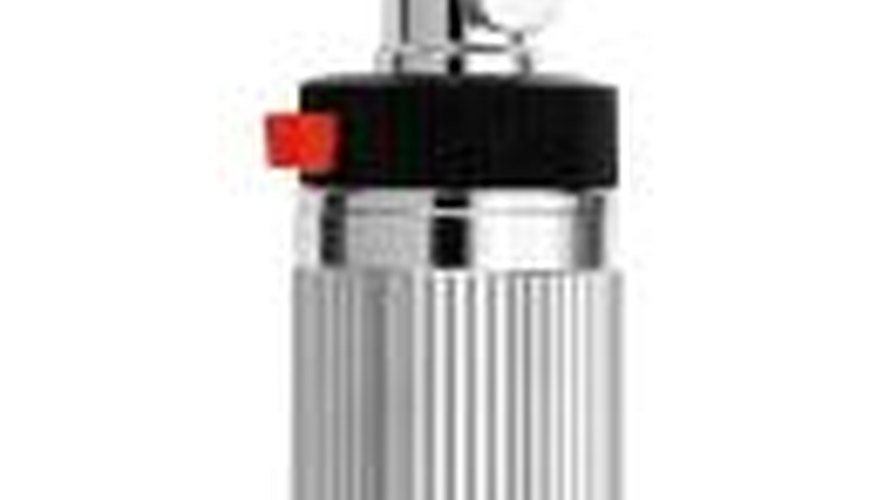Whether an optometrist or ophthalmologist, the ability for an eye care specialist to examine the retina, lens and optic nerve is crucial. Diagnosis of eye disorders requires a view of the eye's interior. The standard instrument for an eye examination is an ophthalmoscope, either a direct or indirect version. The direct model offers several advantages for the treating physician.
Purpose
An ophthalmoscope is a device that allows the treating physician to observe the fundus, or back of the eye. The physician looks at the retina, optic nerve and blood vessels to determine the general health of the eye and his patient. The blood vessels indicate the general health of the patient. Irregularities lead to further testing. Two types of opthalmoscopes are used: direct and indirect.
- An ophthalmoscope is a device that allows the treating physician to observe the fundus, or back of the eye.
Operation
The direct ophthalmoscope operates with a light source and a series of lenses. It is easy to use. Typically, the physician will darken the room and ask the patient to stare at a far away object. The medical provider holds the device up close to the patient's eye and shines the light. The rotating set of lenses allows for different views. The patient hears the clicks as each lens rotates. A typical exam takes three to five minutes.
- The direct ophthalmoscope operates with a light source and a series of lenses.
- The patient hears the clicks as each lens rotates.
Portable
A direct ophthalmoscope offers a portable hand-held device that can be carried by the physician. It is the size of a small flashlight and has a battery in the handle to power the light source. This relatively simple device is much easier to handle and operate during a relatively short eye exam.
Magnification
The direct ophthalmoscope provides magnification of the eye up to 15 times, which is a higher level than the indirect ophthalmoscope. Each of the direct lenses offers different magnifications that provide the medical provider with images that are easy to see and evaluate while using a single eyepiece. Although not necessary, dilation of the patient's pupil, which enlarges the entrance to the eye prior to using the direct ophthalmoscope, also assists the examiner.
